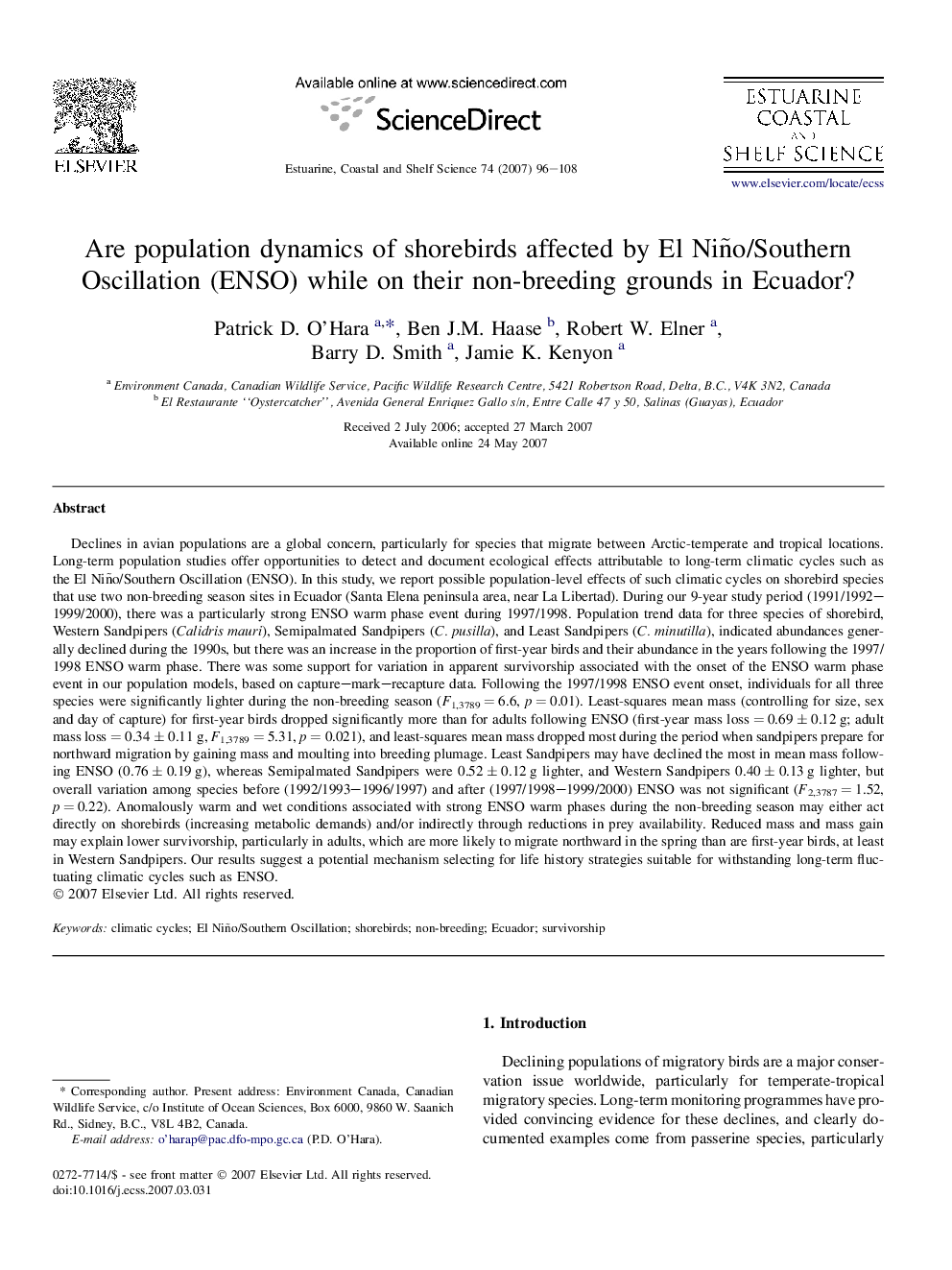| کد مقاله | کد نشریه | سال انتشار | مقاله انگلیسی | نسخه تمام متن |
|---|---|---|---|---|
| 4541751 | 1626702 | 2007 | 13 صفحه PDF | دانلود رایگان |

Declines in avian populations are a global concern, particularly for species that migrate between Arctic-temperate and tropical locations. Long-term population studies offer opportunities to detect and document ecological effects attributable to long-term climatic cycles such as the El Niño/Southern Oscillation (ENSO). In this study, we report possible population-level effects of such climatic cycles on shorebird species that use two non-breeding season sites in Ecuador (Santa Elena peninsula area, near La Libertad). During our 9-year study period (1991/1992–1999/2000), there was a particularly strong ENSO warm phase event during 1997/1998. Population trend data for three species of shorebird, Western Sandpipers (Calidris mauri), Semipalmated Sandpipers (C. pusilla), and Least Sandpipers (C. minutilla), indicated abundances generally declined during the 1990s, but there was an increase in the proportion of first-year birds and their abundance in the years following the 1997/1998 ENSO warm phase. There was some support for variation in apparent survivorship associated with the onset of the ENSO warm phase event in our population models, based on capture–mark–recapture data. Following the 1997/1998 ENSO event onset, individuals for all three species were significantly lighter during the non-breeding season (F1,3789 = 6.6, p = 0.01). Least-squares mean mass (controlling for size, sex and day of capture) for first-year birds dropped significantly more than for adults following ENSO (first-year mass loss = 0.69 ± 0.12 g; adult mass loss = 0.34 ± 0.11 g, F1,3789 = 5.31, p = 0.021), and least-squares mean mass dropped most during the period when sandpipers prepare for northward migration by gaining mass and moulting into breeding plumage. Least Sandpipers may have declined the most in mean mass following ENSO (0.76 ± 0.19 g), whereas Semipalmated Sandpipers were 0.52 ± 0.12 g lighter, and Western Sandpipers 0.40 ± 0.13 g lighter, but overall variation among species before (1992/1993–1996/1997) and after (1997/1998–1999/2000) ENSO was not significant (F2,3787 = 1.52, p = 0.22). Anomalously warm and wet conditions associated with strong ENSO warm phases during the non-breeding season may either act directly on shorebirds (increasing metabolic demands) and/or indirectly through reductions in prey availability. Reduced mass and mass gain may explain lower survivorship, particularly in adults, which are more likely to migrate northward in the spring than are first-year birds, at least in Western Sandpipers. Our results suggest a potential mechanism selecting for life history strategies suitable for withstanding long-term fluctuating climatic cycles such as ENSO.
Journal: Estuarine, Coastal and Shelf Science - Volume 74, Issues 1–2, August 2007, Pages 96–108